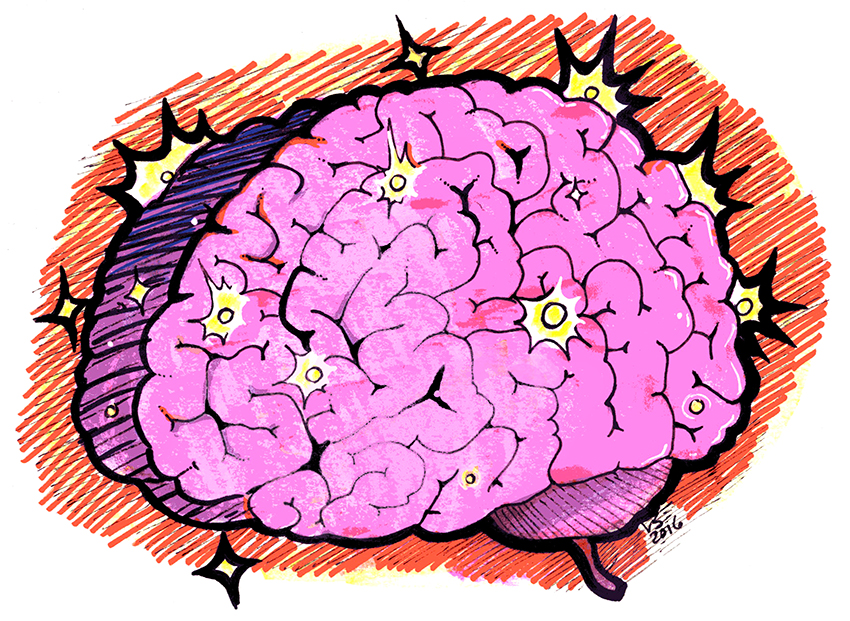Don’t think about the pink elephant.
Tracy Wang, a neuroscience postdoctoral researcher in the Lewis-Peacock Lab, investigates the science of memories. Earlier this month, Wang released research suggesting that forgetting can be an active process, just like remembering. It may be harder for a student to forget the first sentence of this article than to remember Einstein’s field equation.
Forgetting is usually a passive process, according to the Journal of Cognitive Neuroscience. However, Wang’s research focuses specifically on active forgetting.
“We process an item more when we’re trying to intentionally forget the item than when you’re trying to remember it,” Wang said. “That’s very cool.”
People handle memories in different ways, and these memories compete based on how they are processed. Her research focuses on the idea of intentional forgetting. Her findings showed that brain activity is higher when forgetting than when remembering.
For example, Wang tested what happened when a students tried to push unsavory acquaintances out of their minds. She wanted to find out what methods of forgetting are most effective.
The study tested this theory by showing 20 adult subjects images of faces, scenes and objects while an fMRI — a scanner that can monitor brain activity — recorded their brains’ reactions, according to Wang’s work, which was published this month in The Journal of Cognitive Neuroscience.
In addition to showing the subjects faces and scenes, subjects were given a number of tasks which typically lasted for nine to 10 seconds, according to Wang. These tasks tested how subjects handled memories while performing short tasks. Wang’s research was focused on what parts of the brain were associated with different memories during these tasks.
“We’re looking in perceptual regions; we’re looking at where the representation of these faces and regions really are,” Wang said.
Wang theorized that there are two methods involved in intentional forgetting. In the first technique, called direct suppression, the participants actively suppress their memories below conscious thought.
The second option is called direct substitution, where the memory battles another for the brain’s attention. Essentially, the subject would replace the memory with another one.
Wang found that people are generally more likely to engage in direct suppression than thought substitution. To Wang, this was surprising.
“You’d think that thought substitution would put different things against one another in competitive dynamics,” Wang said.
This finding led Wang and her team to a new conclusion; they now hypothesize that the brain has a tagging mechanism for faces the subject wants to forget. However, the tagged memory is then inherently harder to forget because it is tagged. Attempting to forget the memory only causes the subject to remember
it more.
“It’s one of the things we think are likely, and we’re in the middle of trying out all the alternate options,” Wang said. “It’s very, very exciting because the idea is that before you can directly suppress an item, you kind of have to tag that item as something to be directly suppressed.”
According to Wang, there’s still much to learn about how the brain creates and deletes memories.
“We’re looking now at the connectivity between different brain regions — how well do the different signals correlate with one another?” Wang said. “How much are they in sync in working together towards some small task or goal?”















